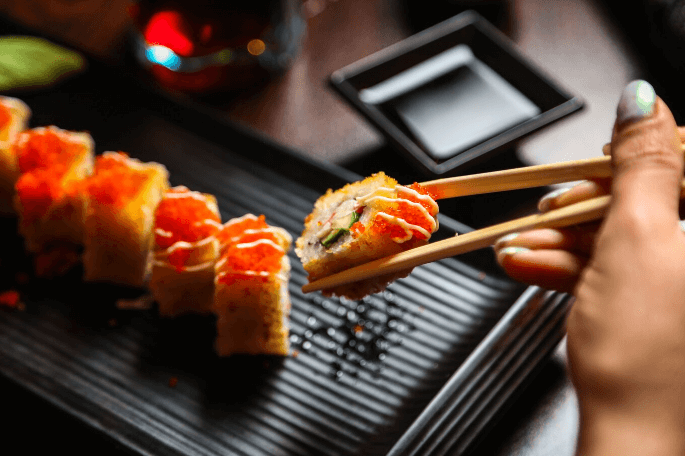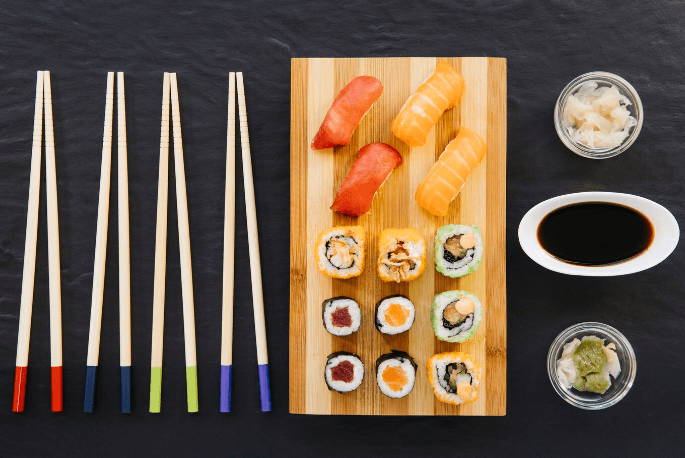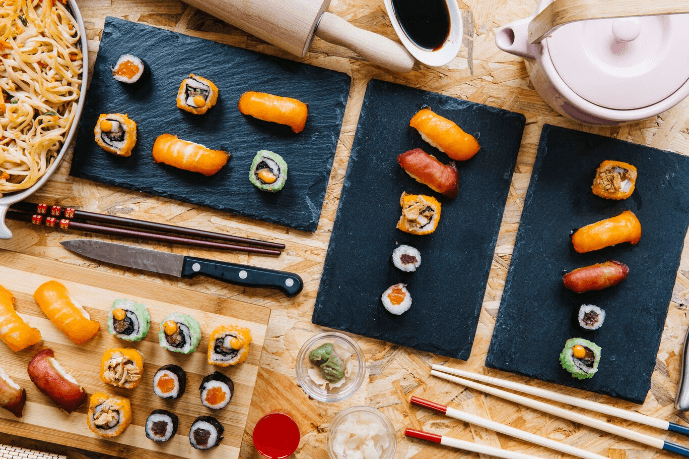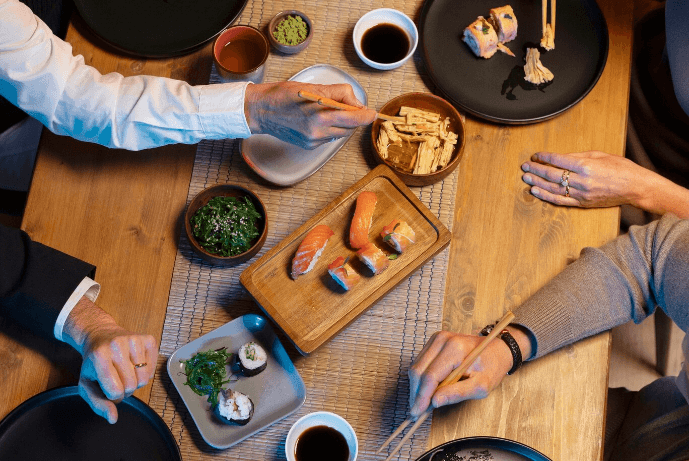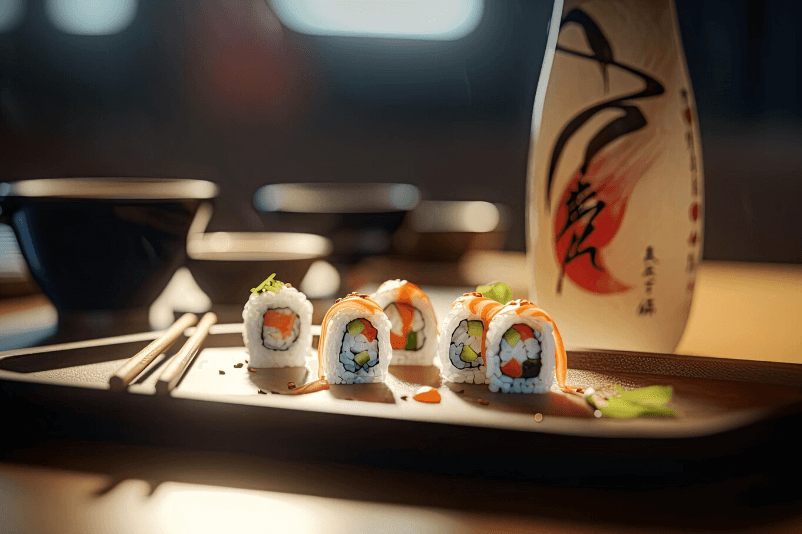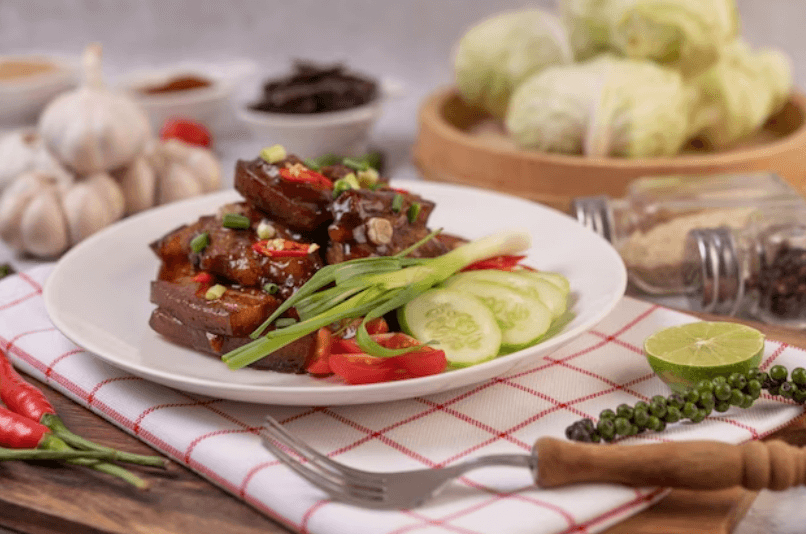Choosing the Right Sushi Knife for Perfect Slices
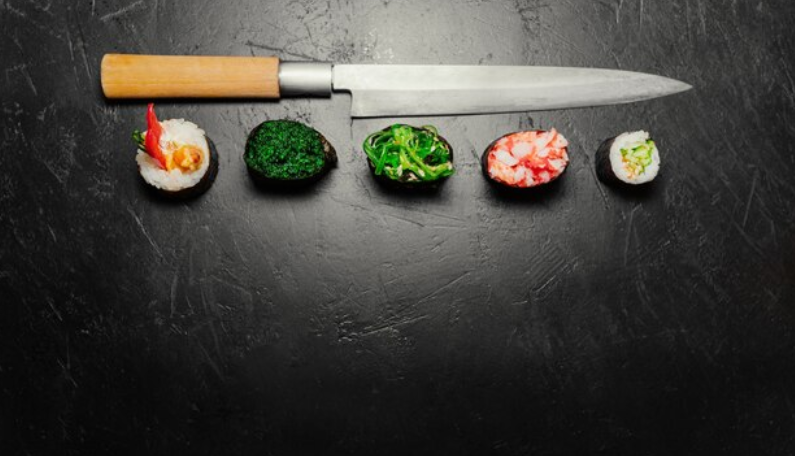
Are you tired of struggling to achieve the perfect slices of sushi?
Look no further!
Choosing the right knife is crucial for achieving those impeccable slices of sushi that you’ve always dreamed of. With the right knife, you can effortlessly create beautifully presented rolls that will impress even the most discerning sushi connoisseurs.
So, how do you choose the right sushi knife?
First and foremost, it’s important to select a knife specifically designed for slicing sushi. Look for a knife that has a long, thin blade made from high-quality stainless steel. This will ensure clean, precise cuts and prevent the rice from sticking to the blade.
Additionally, consider the handle. A comfortable and ergonomic handle will make it easier to control the knife and achieve consistent slices with minimal effort.
Why is choosing the right knife so important?
Well, when it comes to sushi, presentation is key. The right knife will help you create perfectly shaped and evenly cut rolls, allowing you to showcase your culinary skills and elevate your sushi experience.
Don’t settle for anything less than perfection.
Choose the right sushi knife and start slicing like a pro today!
Understanding the Importance of a Sushi Knife
When it comes to creating perfect slices of sushi, choosing the right knife is crucial. A well-designed sushi knife can make all the difference in the world when it comes to the texture and presentation of your sushi rolls.
The Right Knife for the Right Technique
There are various types of knives available for slicing sushi, but not all are created equal. The traditional Japanese sushi knife, known as a “yanagiba,” is the most commonly used knife for sushi preparation. Its long, thin blade is specifically designed to cut through raw fish with precision and ease.
Another popular sushi knife is the “nakiri,” which is a Japanese vegetable knife. While it may not be the first choice for slicing fish, it is ideal for cutting vegetables and other ingredients used in sushi rolls.
The Perfect Slice
Choosing the right sushi knife ensures that you can achieve the perfect slice every time. The sharpness of the blade allows for clean, precise cuts, which is essential for maintaining the integrity of the fish and other ingredients. A dull knife can lead to ragged edges and uneven slices, compromising the overall presentation of your sushi.
Additionally, the length and shape of the sushi knife’s blade are crucial in achieving the perfect slice. A longer blade allows for smooth, continuous cuts, while a curved edge helps to maintain control and accuracy during the slicing process.
Investing in a high-quality, well-crafted sushi knife is essential for any sushi enthusiast or professional chef. The right knife will not only ensure that your sushi slices are perfect every time but also enhance your overall sushi-making experience.
Different Types of Sushi Knives
When it comes to perfect slices of sushi, choosing the right sushi knife is crucial. Different types of sushi knives have their own unique features and are designed for specific purposes. It is important to understand the different types of sushi knives available to ensure you have the right tool for the job.
1. Yanagi Ba – This long, slender knife with a single beveled edge is perfect for slicing sashimi. The sharp edge allows for clean, precise cuts without tearing the delicate fish.
2. Deba Bocho – The deba bocho is a heavy, thick-bladed knife used for filleting fish and cutting through small bones. It is ideal for preparing whole fish and creating the perfect sushi cuts.
3. Usuba Bocho – This knife features a thin, rectangular blade and is mainly used for precision vegetable preparation. It allows for clean cuts and precise thin slices of vegetables, which are often used in sushi rolls and garnishes.
4. Nakiri Bocho – Similar to the usuba bocho, the nakiri bocho is another vegetable knife used for thin slicing and chopping. Its double-edged blade makes it easy to slice through vegetables with minimal effort.
5. Takohiki – The takohiki knife is specifically designed for slicing octopus. Its long, thin blade and sharp edge make it perfect for creating thin, delicate slices of octopus that are commonly used in sushi and sashimi dishes.
Remember, when choosing a sushi knife, it is important to consider the specific task you will be using it for. Each knife has its own unique features and is designed for different purposes to ensure you can create perfect slices of sushi every time.
The Blade Material Matters
When it comes to choosing the right sushi knife for perfect slices, one of the most important factors to consider is the blade material. The type of material used to create the blade will greatly affect the durability, sharpness, and overall performance of the knife.
There are several different types of blade materials commonly used in sushi knives, each with its own unique qualities. One popular option is high-carbon stainless steel, which combines the best of both worlds. It offers the sharpness and edge retention of traditional high-carbon steel, along with the corrosion resistance of stainless steel.
Another option to consider is laminated blades, which consist of a core made of high-carbon steel surrounded by layers of stainless steel. The laminated construction provides both strength and flexibility, making it an excellent choice for sushi preparation.
For those looking for a more authentic experience, traditional high-carbon steel blades are also available. These blades are known for their exceptional sharpness and ability to maintain a razor-sharp edge. However, they do require more care and maintenance to prevent rusting.
Regardless of the blade material you choose, it is essential to keep in mind that proper maintenance is key to prolonging the life of your sushi knife. Regular sharpening and honing, as well as proper cleaning and storage, will ensure that your knife remains in optimal condition for perfect slices every time.
Choosing the Right Blade Length
When it comes to choosing the right sushi knife, one of the most important factors to consider is the blade length. The length of the blade can greatly affect the precision and ease with which you can slice through your sushi rolls.
For perfect slices, it is crucial to select a knife with the right blade length. A blade that is too short may not be able to cut through the entire roll in one motion, resulting in uneven slices. On the other hand, a blade that is too long can be difficult to maneuver and may result in a loss of control.
Generally, a blade length of around 9 to 10 inches is recommended for most home chefs. This length provides a good balance between control and efficiency. However, if you are a professional sushi chef or have experience with longer blades, you may prefer a slightly longer blade for faster and more precise cuts.
It is also important to consider the size of your sushi rolls when choosing the blade length. If you typically make smaller, bite-sized rolls, a slightly shorter blade may be more suitable. On the other hand, if you prefer larger rolls or specialty rolls that require more length to cut through, a longer blade may be necessary.
In conclusion, choosing the right blade length for your sushi knife is essential for perfect slices. Consider the balance between control and efficiency, as well as the size of your sushi rolls, to make an informed decision. With the right knife in hand, you can confidently create beautifully sliced sushi every time.
Handle Design and Comfort
When it comes to choosing the right sushi knife for perfect slices, handle design and comfort are essential factors to consider.
The perfect handle design should provide a secure grip, allowing you to have complete control over the knife. This will result in precise and effortless cuts, enhancing the overall sushi slicing experience.
In addition to grip, comfort is another critical aspect of handle design. Long hours of sushi preparation can take a toll on your hand, so it’s crucial to choose a knife with an ergonomic handle that feels comfortable in your hand.
An ergonomic handle is designed to fit the natural contours of your hand, reducing fatigue and increasing comfort during prolonged use. This feature allows you to focus on the art of sushi making without discomfort or distraction.
Moreover, a well-designed handle will also provide a good balance to the knife, ensuring that it is not too heavy or too light. A balanced knife makes it easier to maintain control and stability while slicing through the delicate layers of sushi.
Remember, handle design and comfort are just as important as the blade when it comes to choosing the right sushi knife. So, take your time to find a knife that feels perfect in your hand and will enhance your sushi slicing experience to new heights.
Considering the Knife’s Balance
When choosing the right sushi knife for perfect slices, it’s important to consider the knife’s balance. The balance of a knife can greatly affect its usability and the precision of its cuts.
A well-balanced knife will distribute its weight evenly, allowing for easier control and a more comfortable grip. This is particularly important when working with delicate ingredients like sushi. A knife that is too heavy on the blade end can make it difficult to control the amount of pressure applied, leading to inconsistent cuts and potentially damaging the ingredients.
On the other hand, a knife that is too heavy on the handle end can cause imbalance and strain on the wrist. This can make precision cutting more challenging and potentially lead to fatigue.
When choosing a sushi knife, it’s recommended to find one with a balanced weight distribution. This will ensure that you have the control and comfort necessary for perfect slices every time. A balanced knife will allow you to easily maneuver through different textures and thicknesses of fish, creating clean and precise cuts for a visually stunning presentation.
| Benefits of a Balanced Knife |
|---|
| 1. Enhanced control and precision |
| 2. Comfortable grip for extended use |
| 3. Consistent and clean cuts |
| 4. Reduced strain and fatigue on the wrist |
| 5. Optimal performance when working with delicate ingredients |
By considering the knife’s balance when choosing the right sushi knife, you can ensure that you have the perfect tool for creating exquisite sushi slices every time. Don’t compromise on the quality and precision of your cuts – invest in a well-balanced knife for an unparalleled sushi experience.
Japanese vs. Western Style Knives
When it comes to choosing the right sushi knife for perfect slices, you may find yourself confronted with the decision between Japanese and Western style knives. Both types of knives have their own unique characteristics and advantages, so it’s important to understand the differences before making your choice.
Japanese sushi knives are known for their exceptional sharpness and precision. Made from high-quality carbon steel, these knives have narrow and thin blades that allow for extremely precise cutting. The fine edge of a Japanese knife ensures that each slice of sushi is clean and smooth, creating a visually appealing presentation.
On the other hand, Western style sushi knives are typically made from stainless steel and have a thicker and wider blade. While they may not be as sharp as their Japanese counterparts, they are more durable and easier to maintain. The wider blade of a Western style knife also makes it suitable for cutting larger pieces of fish or ingredients, making it a versatile option in the kitchen.
Ultimately, the choice between a Japanese and Western style sushi knife depends on personal preference and the specific needs of the user. If you value precision and the perfect slice, a Japanese knife may be the right choice for you. However, if durability and versatility are more important, a Western style knife might be a better fit for your needs.
Whichever style you choose, it’s essential to invest in a high-quality sushi knife that is specifically designed for the task at hand. With the right knife in your hand, you’ll be able to create picture-perfect sushi slices that are sure to impress.
Maintaining and Sharpening Your Sushi Knife
When it comes to choosing the right sushi knife for perfect slices, it is crucial to also focus on maintaining and sharpening your knife. The quality and sharpness of your knife play a significant role in achieving the perfect slices of sushi.
To maintain your sushi knife, make sure to clean it properly after each use. Use warm, soapy water and a soft sponge or cloth to remove any food residue. Avoid using abrasive materials or harsh chemicals, as they can dull or damage the blade.
After cleaning, always dry your sushi knife thoroughly to prevent rust. Moisture can accelerate the rusting process and affect the sharpness of the blade. Consider storing your knife in a protective sheath or knife block to further prevent any potential damage.
Regular sharpening is essential to keep your sushi knife in optimal condition. A dull blade can lead to uneven slices and create a less enjoyable sushi experience. You can use a sharpening stone or a honing rod to sharpen your knife.
If you choose to use a sharpening stone, start by wetting it with water. Then, hold the knife at a 15-20 degree angle and gently slide the blade along the stone in a sweeping motion. Repeat the process on the opposite side of the blade to ensure an even sharpening.
A honing rod can also be used to maintain the sharpness of your sushi knife. Hold the rod upright and angle the knife’s edge against the rod. With light pressure, slide the knife downwards, moving from base to tip in a controlled motion. Repeat on the other side of the blade.
Remember to always exercise caution when sharpening your sushi knife, as the blade is extremely sharp. It is recommended to seek professional assistance if you are unsure or inexperienced in the sharpening process.
By properly maintaining and sharpening your sushi knife, you can ensure that it remains in top condition for perfect slices every time. Don’t forget to regularly clean, dry, and sharpen your knife to enhance your sushi-making experience to the fullest!
| Key Points: |
|---|
| – Clean your sushi knife properly after each use |
| – Dry your knife thoroughly to prevent rust |
| – Store your knife in a protective sheath or knife block |
| – Regularly sharpen your sushi knife using a sharpening stone or honing rod |
| – Seek professional assistance if unsure or inexperienced in sharpening |
Budget-Friendly Options that Deliver Quality
When it comes to selecting the right sushi knife for perfect slices, you don’t have to break the bank. There are budget-friendly options available that still deliver the quality you need for a satisfying sushi experience.
Affordable Knives without Compromising Performance
Don’t let a limited budget deter you from achieving professional-grade sushi slices. There are affordable sushi knives that offer exceptional performance without compromising on quality. These knives are made from high-quality stainless steel, ensuring durability and sharpness.
With their thin and razor-sharp blades, these budget-friendly options can effortlessly glide through even the toughest fish, ensuring clean and precise cuts. Whether you’re a sushi enthusiast or a professional sushi chef, these knives will meet your expectations without draining your wallet.
Value for Money
Investing in a budget-friendly sushi knife doesn’t mean sacrificing value for money. These knives come with ergonomic handles that provide a comfortable grip, allowing for better control and stability while slicing. Additionally, they often come with protective sheaths or cases, ensuring safe and convenient storage.
With their excellent craftsmanship and attention to detail, these knives offer great value for money. You can expect them to maintain their sharpness and performance even with regular use, providing long-lasting durability.
In summary, if you’re in search of a budget-friendly sushi knife that still delivers quality, there are options available to meet your needs. These knives offer outstanding performance, value for money, and are perfect for achieving the perfect slices of sushi. Don’t let a tight budget hold you back from enjoying restaurant-quality sushi at home.
Where to Buy the Perfect Sushi Knife
When it comes to choosing the right sushi knife for perfect slices, it’s essential to find a reputable retailer that offers a wide selection of high-quality knives. While you may find sushi knives in various stores, it’s important to purchase from a dedicated knife retailer or a specialty Japanese knife shop to ensure superior craftsmanship and authenticity.
One option is to visit your local kitchenware stores or specialty cooking shops. These establishments often carry a range of knives, including sushi knives. However, it’s advisable to do some research beforehand to ensure they offer the specific type of sushi knife you’re looking for. You can also inquire with the store employees, who are knowledgeable about their products and can help you make the right choice.
Another convenient option is to browse online knife retailers or Japanese knife specialist websites. These platforms provide an extensive selection of sushi knives, ranging from traditional single-bevel Yanagiba knives to versatile multipurpose Gyuto knives. When shopping online, make sure to read customer reviews and check the retailer’s reputation to ensure you’re purchasing from a reliable source.
Furthermore, you may consider visiting local Asian markets or Japanese grocery stores. These establishments often have a section dedicated to kitchenware, where you can find authentic Japanese sushi knives. The advantage of shopping in person is that you can see and feel the knife before making a purchase, ensuring it fits comfortably in your hand and meets your specific needs.
Lastly, there’s also the option of purchasing directly from Japanese knife manufacturers or their authorized distributors. This guarantees that you’re getting an authentic knife made by skilled craftsmen with a deep understanding of the art of Japanese knife making. Plus, you may be able to find exclusive models or limited edition knives that add a touch of uniqueness to your sushi knife collection.
Ultimately, the perfect sushi knife can be found in various places, both online and offline. By carefully considering your options and doing some research, you can find a reputable retailer that offers high-quality knives with the right features for perfect slices, ensuring an exceptional sushi-making experience every time.
Tips for Using Your Sushi Knife
Choosing the right sushi knife is essential for achieving perfect slices. Once you have selected the perfect knife, here are some tips to help you get the most out of it:
| 1. Proper Grip | Hold the sushi knife with a firm grip but make sure not to grip it too tightly. This will allow for better control and precision when cutting through the sushi rolls. |
| 2. Angle of the Knife | When using your sushi knife, make sure to keep it at a slight angle to achieve the perfect slice. This will help you achieve clean and smooth cuts, maintaining the integrity of the sushi. |
| 3. Clean Blade | Always keep your sushi knife clean and free from any residue or food particles. This will ensure that the knife cuts smoothly through the sushi rolls without any resistance. |
| 4. Proper Technique | Use a gentle sawing motion with your sushi knife when cutting through the sushi rolls. Avoid using excessive force, as it can crush the delicate ingredients inside. |
| 5. Sharpening | Regularly sharpen your sushi knife to maintain its sharpness. A dull knife can make it difficult to achieve clean and precise slices. Use a sharpening tool or seek professional sharpening services. |
By following these tips and using your sushi knife correctly, you can ensure that your sushi rolls are consistently sliced with perfection, enhancing the overall dining experience.
Q&A:
What is a sushi knife?
A sushi knife, also known as a Sashimi knife, is a type of kitchen knife specifically designed for preparing sushi and sashimi. It typically has a long, narrow blade with a single edge, allowing for precise and thin slicing.
What are the different types of sushi knives?
There are several types of sushi knives available, each designed for different purposes. Some common types include Yanagi, Deba, and Usuba. Yanagi is a long, thin knife used for slicing fish, Deba is a heavy knife used for cutting through fish bones, and Usuba is a vegetable knife used for making thin, precise cuts.
How do I choose the right sushi knife?
When choosing a sushi knife, consider the type of sushi you will be preparing and your skill level. If you are a beginner, a Yanagiba or a Santoku knife may be a good choice. If you are more experienced, you may prefer a specialized knife like a Deba or Usuba. Additionally, consider the length of the blade and the material of the knife, such as stainless steel or carbon steel.
What are the benefits of using a sushi knife?
Using a sushi knife has several benefits. The sharp and precise blade allows for clean cuts, ensuring the flavors of the sushi remain intact. Additionally, the single-edge design of the knife helps to prevent the sushi from tearing or shredding, resulting in a visually appealing presentation. Overall, a sushi knife can greatly enhance your sushi-making experience.
